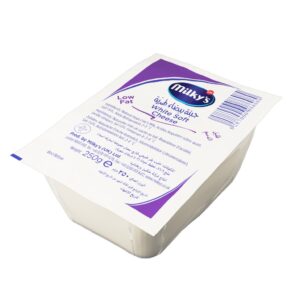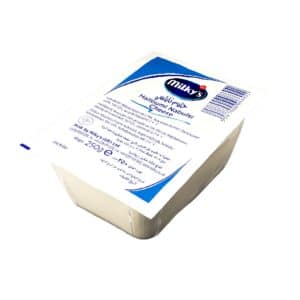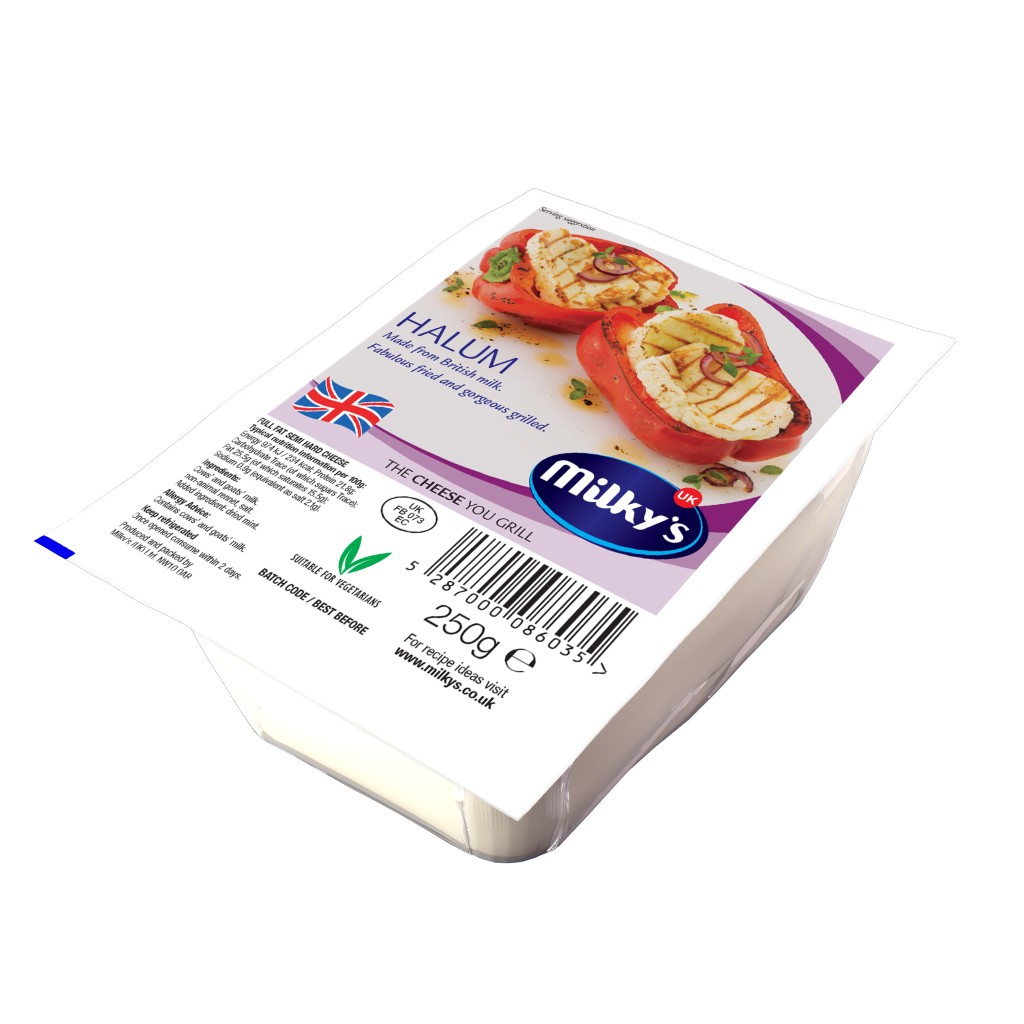Halloumi Cheese
Ingredients
Full Fat Cow’s Milk, Vegetarian Rennet, Salt, Dried Mint
Interestingly, Halloumi cheese is Fabulous fried and gorgeous grilled Halloumi Cheese
| Typical values per 100g | Nutrition | Value |
| Energy kJ | 974 | |
| Energy kcal | 234 | |
| Fat (g) | 25.5 | |
| of which saturates (g) | 15.5 | |
| Carbohydrate (g) | <0.1 | |
| of which sugars (g) | <0.1 | |
| Fibre (g) | 2.1 | |
| Protein (g) | 21.8 | |
| Salt (g) | 2.08 |
| Shelf life from packing | 5 months |
| Life once opened | 2 days when stored at 0-5°C |
| Min shelf life delivery | 3 months |
| Storage temperature | 0-5°C |
Net Weight : 250g e
Box: 2.5kg/9kg
First of all, Halloumi cheese is a semi-hard cheese typically made from the milk of goats, sheep, or cows. Interstingly, it’s known for its tangy taste and firm, chewy texture.In addition, Halloumi is often used in cooking, and can be fried until brown without melting.
On the other hand, this makes it an excellent cheese for frying or grilling or fried and served with vegetables, or as an ingredient in salads. However, there are many recipes that use halloumi beyond simple grilling.
While halloumi’s nutritional profile can vary slightly based on how you prepare it, each serving provides a good amount of protein and calcium.
Moreover, halloumi cheese can be baked, grilled, or fried without losing its shape. In conclusion, it’s typically served cooked, which enhances its signature salty taste and makes it slightly crispy on the outside. On the other hand, you can serve it on its own or paired with other ingredients such as:
- fresh fruit,
- tomatoes,
- toasted sesame seeds, or
- honey
In addition, traditional halloumi cheese is made from unpasteurised sheep and goat milk. However, aged halloumi is also popular.




